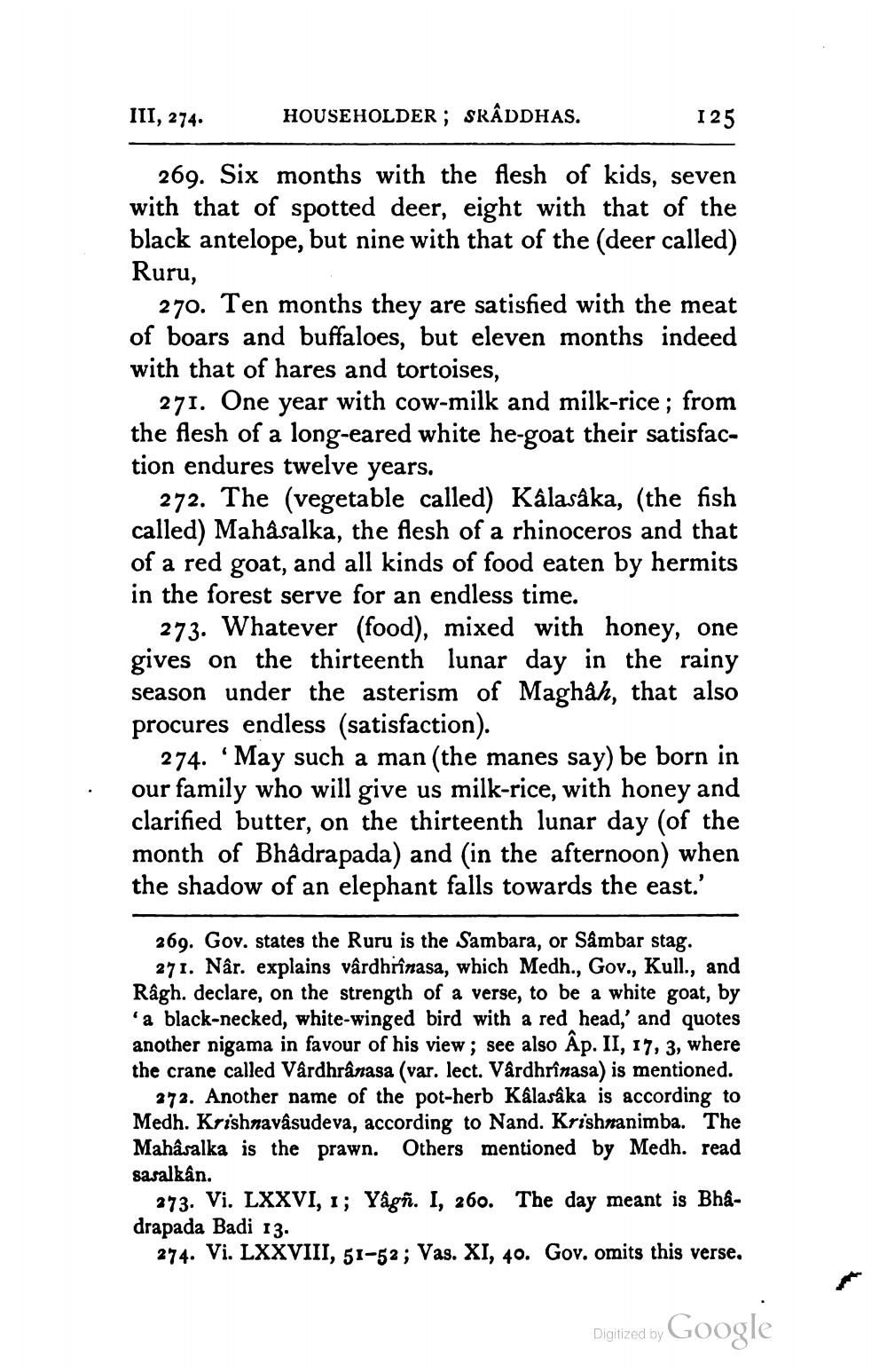________________
III, 274.
HOUSEHOLDER; SRÂDDHAS.
125
269. Six months with the flesh of kids, seven with that of spotted deer, eight with that of the black antelope, but nine with that of the (deer called) Ruru,
270. Ten months they are satisfied with the meat of boars and buffaloes, but eleven months indeed with that of hares and tortoises,
271. One year with cow-milk and milk-rice; from the flesh of a long-eared white he-goat their satisfaction endures twelve years.
272. The (vegetable called) Kalasâka, (the fish called) Mahâsalka, the flesh of a rhinoceros and that of a red goat, and all kinds of food eaten by hermits in the forest serve for an endless time.
273. Whatever (food), mixed with honey, one gives on the thirteenth lunar day in the rainy season under the asterism of Maghah, that also procures endless (satisfaction).
274. May such a man (the manes say) be born in our family who will give us milk-rice, with honey and clarified butter, on the thirteenth lunar day (of the month of Bhadrapada) and (in the afternoon) when the shadow of an elephant falls towards the east.'
269. Gov. states the Ruru is the Sambara, or Sambar stag.
271. Nâr. explains vârdhrînasa, which Medh., Gov., Kull., and Râgh. declare, on the strength of a verse, to be a white goat, by 'a black-necked, white-winged bird with a red head,' and quotes another nigama in favour of his view; see also Ap. II, 17, 3, where the crane called Vardhrânasa (var. lect. Vårdhrinasa) is mentioned.
272. Another name of the pot-herb Kalasâka is according to Medh. Krishnavasudeva, according to Nand. Krishnanimba. The Mahâsalka is the prawn. Others mentioned by Medh. read sasalkan.
273. Vi. LXXVI, 1; Yågñ. I, 260. The day meant is Bhadrapada Badi 13.
274. Vi. LXXVIII, 51-52 ; Vas. XI, 40. Gov. omits this verse.
Digitized by
Digitel vy Google




